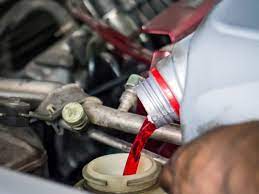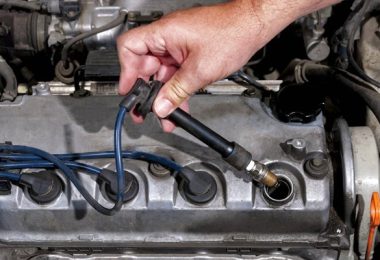It’s important to pay attention to your vehicle when it comes to transmission fluid. If you’re not sure what level of transmission fluid is normal for your car, ask a mechanic or check your owner’s manual. You may also notice that there are three different types of transmission fluids: automatic, manual and dual-clutch (manual). Dual-clutch transmissions require special additives in the fluid, so if you’ve been using a blend instead of regular fluid then be sure to switch over now.
Transmission fluid is a mix of oil and water. It lubricates the gears, bearings and seals in your transmission. Without it, your vehicle’s transmission can overheat, causing damage to the entire system. If you notice that your car is leaking transmission fluid, it’s important to repair the leak as soon as possible. Transmission fluid will quickly drain from the transmission, which can lead to major damage. Here are some signs that might indicate it’s time for your next change:
Burning smell
A burning smell is a sign that your car is overheating. Overheating can cause damage to the engine, and can also cause transmission fluid to boil. Transmission fluid should be checked regularly, as well as changed every 30,000 miles. If you notice that there is a burning smell coming from your car while it’s in use or when you start up the vehicle, check the coolant level immediately before driving any further.
Whirring sound
If you hear a whirring sound when your engine is running, it’s likely that your transmission fluid is low. This sound may be caused by the transmission trying to shift gears and failing to do so; this is a sign of a problem with the transmission and should be addressed immediately.
Shifting issues.
Many shifting issues are caused by low transmission fluid. However, there are other things that can cause shifting issues as well. If you notice that your car is having trouble shifting between gears, it’s best to have a professional look at it before driving further.
A good example of how these fluids work would be like if you had an old car with manual gears but no oil; every time you would try to shift from one gear into another gear it would grind against each other until eventually destroying itself because there was no way for them to move smoothly together without any kind of lubrication between them. The same thing happens inside your car’s transmission when there isn’t enough lube inside of it (or if there are too many particles such as dirt or dust) causing friction between all moving parts which causes heat build up over time until eventually causing failure within those components themselves – leading up towards needing replacement parts like new clutches or seals so that everything runs smoothly again!
Leaking fluid
You may see signs of leaking transmission fluid if you notice oil stains on the ground under your car or a puddle of fluid inside the car. If you suspect that your transmission fluid is leaking, take your vehicle to a mechanic for inspection and repair. Read Also : Best Color of Transmission Fluid
Easy ways to determine where fluid is leaking from include looking at:
The underside of the vehicle for oil-like stains or puddles of dark liquid on the ground
Your exhaust pipe for black smoke and smells like burning rubber or melting plastic
Transmission slipping
Transmission slipping, or how a transmission feels when it is not working correctly. It can be caused by low fluid, a failing transmission, clutch or converter. `
Transmission slipping occurs when your car experiences difficulty moving forward when accelerating from high gear to low gear with the engine at idle speed. If there is an issue with your transmission system and you hear a whining noise coming from the rear of your vehicle as well as a shift indicator light coming on then this would indicate that there is something wrong with your transmission system which means that you should take it into see if its repairable or not.
Being able to identify when your transmission fluid is low can help you take care of your vehicle.
Your transmission fluid is the lifeblood of your vehicle. It lubricates, cools, cleans and helps to keep the gears from grinding together. Transmission fluid can be replaced with another type of fluid (such as automatic transmission fluid) but it is important to check your manufacturer’s specifications before doing so.
Low transmission fluid causes wear on the gears and bearings, creating friction that leads to inefficient operation. The hydraulic oil also acts as a coolant for the transmission, helping it maintain an ideal temperature for smooth operation of moving parts in the unit. Low fluid levels can lead to overheating problems which reduce the lifetime of these components even further. As mentioned above, dirt and debris accumulate easily inside a transmission without proper lubrication from transmission fluid; this build-up will cause more friction than usual when driving–and faster wear on internal components–which may result in damage if left unattended long enough!
Transmission fluid can be found in all vehicles with automatic transmissions such as: cars, trucks, SUVs/Jeeps/Crossovers, minivans/vans/SUVs with 4WD or AWD systems that have a full-time four wheel drive system (not part-time or on demand), trucks with three point hitches attached to them along with other similar types of vehicles equipped with automatic transmissions which require this type of substance in order for it work properly.
If you notice that your transmission is running hot or making noises, it may mean that you are overdue for an oil change. A mechanic will inspect the condition of both internal and external components in order to determine whether a repair needs to be made or if replacement parts are needed. Read Also : Best Way to Check Brake Fluid
Conclusion
If you notice any of these signs, it’s time to check your transmission fluid. If you’re unsure whether or not your transmission needs to be serviced, we recommend contacting a professional mechanic who can inspect the vehicle for signs of leaks and other problems. If you are experiencing any of these symptoms, have your transmission serviced immediately. Transmission fluid should be checked and changed every 30,000-40,000 miles.







